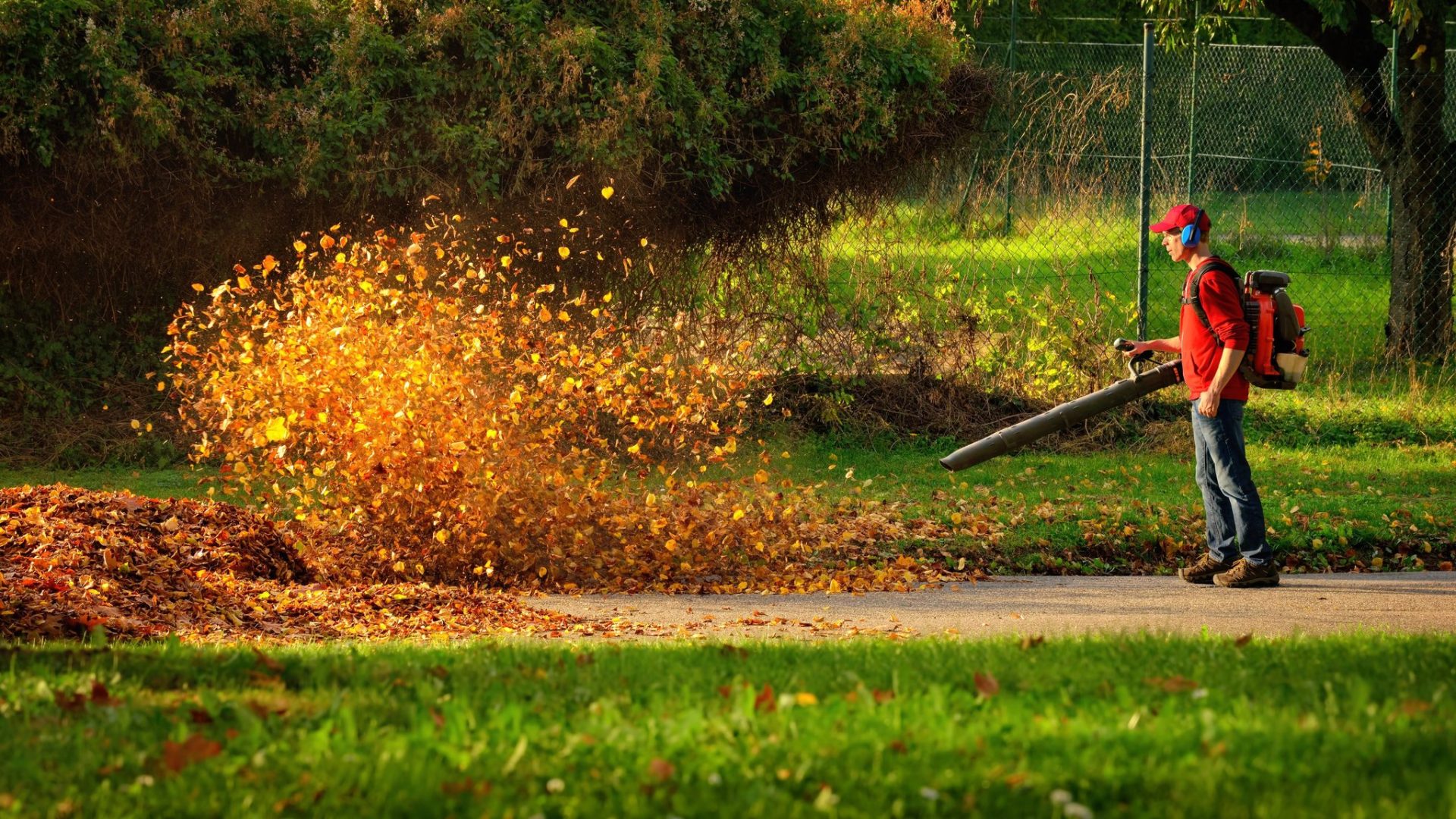Fall is probably my favorite time of the year. There is something so beautiful about watching the leaves change colors. For a few magical weeks the trees are truly breathtaking in their vibrant reds, oranges, and yellows. However, once those leaves begin to fall you are tasked with the chore of raking and bagging leaves. This can be tedious work, that will leave your hands blistered and your muscles sore. Many people prefer the easiness and convenience of using leaf blowers instead. A chore that would have once taken an entire afternoon, can now be finished in just minutes. Leaf blowers are a great tool to have in your shed this fall. If you have never used one before, you may be wondering how they work. This article will teach you how leaf blowers work, and why you need one for your yard this fall.
Leaf Blowers Use Centrifugal Force
There are a few different types of leaf blowers: electric, gas-powered, and battery powered. No matter what type of leaf blower you own, all leaf blowers work by using centrifugal force. To put it more simply, leaf blowers have a motor which spins a fan. This fan has many blades that will pull large quantities of air from the outside. The blades then pull the air around the fan and push the air out towards a much smaller tube. This process builds up pressure within the leaf blower because air is entering the leaf blower faster than it can be released. As a result, this pressure forces the air out of the small tube at extremely fast speeds. Some leaf blowers can blow air out as fast as 250 mph. The centrifugal force in leaf blowers will provide more than enough power to tackle any job you may have.
How to Measure the Power in Leaf Blowers
The overall air speed of leaf blowers can be measured with a distance-to-time measurement. Miles per hour (MPH) is the most common air speed measurement. This measurement is an estimate of how many miles the air would travel in one hour if the velocity remained the same. Some leaf blowers that measure their air speed in meters per second (M/S). Every 1 m/s will roughly translate to 2.24 mph. While some manufacturers advertise strong MPH as a major selling point, it is not the only number you should consider when looking for leaf blowers. You should also consider the cubic feet per minute (CFM). The CFM is a measurement of the volume of air that travels through the leaf blower. Check both the MPH and CFM to be sure you are getting the right combination of both air volume and speed.
Leaf Blowers with Vacuuming Functions
Blowing your leaves into a pile is just half of the battle. Next, you need to somehow gather the leaves up into yard bags so you can properly dispose of them. Otherwise, you will find that on the next windy day, your leaf pile will be blown back all over your yard. Luckily some leaf blowers are equipped with a vacuum function. This function saves you the time it would take to rake and bag your leaf piles by hand. The vacuum function works the same as the blower function, except the air is directed towards a bag instead of out the tube. This will pull the leaves up into the leaf blowers and then shoot them into a storage bag. Some leaf blowers can actually shred the leaves before shooting them into the storage bag. This helps you store more leaves in a small space.
Vacuum Fan Systems
If you plan on purchasing a leaf blower with a vacuum function, you should check to see what type of vacuum fan it utilizes. The two types of vacuum fans in leaf blowers are clean fans and dirty fans. There are pros and cons to using either type of fan. It is important to remember that no matter what type of fan you choose, both will need routine maintenance and cleaning. Although one system is named “dirty” and the other “clean” both will have debris buildup each use that will need to be cleaned periodically.
Dirty Fan Systems
Dirty fan systems in leaf blowers mean that the fan, or impeller, is doing the actual shredding of the leaves. This is helpful because it eliminates extra parts. Less parts means that there is less to clean, or provide maintenance for. Dirty fan systems can also mulch your leaves or grass clippings into much tinier pieces than a clean fan system. Smaller mulch pieces means you can store more debris in your storage bags and go longer between needing to empty them. The downside to using a dirty fan system is that your fan does the actual mulching. This leaves your fan open to damage from rocks, or other hard objects that may inadvertently be sucked up by leaf blowers.
Clean Fan Systems
A clean fan system in leaf blowers typically means that they use shredding lines to help shred the leaves. While a clean fan system may not be able to mulch as small as a dirty fan system, it is still quite efficient and helpful. The biggest draw to a clean fan system is that it protects the fan in the leaf blowers casing. If you accidentally suck up a rock, it will hit the shredding line before it hits the fan. Keeping your fan intact and functional will ultimately extend the life of the leaf blowers. Unfortunately, that extra shredding line is also the reason owning a clean fan system may be more work. You will need to clean out or replace the shredding line more often than when you use leaf blowers with a dirty fan system.
In Conclusion
I hope you learned a little more about how leaf blowers work. Because being a smart shopper means you understand what you are paying for. Knowing about what functions you are paying for will help you use the leaf blowers to their full potential. Now that you know how leaf blowers work you can decide what kind of power you want your leaf blower to have. There is something for everyone in every price range. The trick is to find leaf blowers that have a good numbers in both MPH and CFM. If you are looking at leaf blowers with vacuum settings, think about which fan system you prefer. Once you have all of your options weighed, I am sure you will find a leaf blower that works for you. So say ‘goodbye’ to your old rake and subsequent back pain, and say ‘hello’ to a new leaf blower.
Related Article: Best Leaf Blower Options to Help Keep Your Yard Well Maintained









